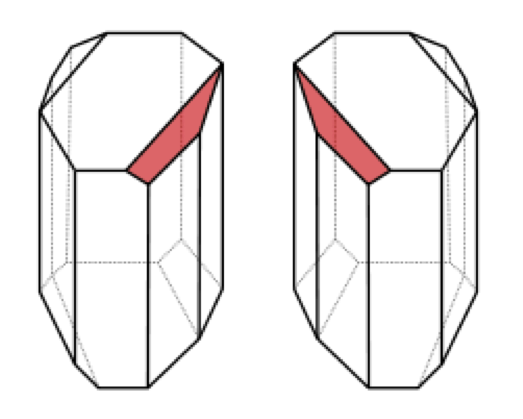As the International Year of Crystallography gives way to the International Year of Light, we end the #Crystallography365 series with a retrospective of how research in optics has advanced crystallography, and a prospective on how it will do so in the future.
There was crystallography before x-rays, but since 1912 the field has been intimately connected to x-ray optics [1]. In 1895, just after Maxwell had shown that light was a transverse electromagnetic wave, Rontgen discovered x-rays while conducting experiments of the optical properties of cathode rays. Rontgen’s mysterious x-rays captured worldwide attention; but particularly that of Arnold Sommerfeld’s. Although a theoretician himself, he had assembled an impressive group of experimentalists in his research group. Sommerfeld had surmised that that x-rays were transverse EM waves with a wavelength on the order of 1 angstrom, and furthermore that diffraction through a suitably sized slit would prove this fact.
In 1912 Max Von Laue, then an experimentalist in Sommerfeld’s group, showed that crystalline materials diffract x-rays, thus in just one single experiment demonstrating the wave nature of x-rays and the lattice structure of crystals [2]. Then using mathematical arguments from wave optics W.L Bragg (the son) developed his groundbreaking formulas relating the intensity of spots and structure. Later, using optics and engineering, W.H. Bragg (the father) constructed the first x-ray spectrometer, and Weissenberg invented the x-ray camera named after him [3].
The invention of synchrotron light sources and advances in x-ray optics have boosted crystallography to new heights. Synchrotrons were first built for particle physics applications. X-ray radiation production in synchrotrons is an energy-sapping nuisance, and literally holes needed to be drilled in the particle pipe to let the x-rays out. Of course scientists soon realized that this ‘waste radiation’ might be useful after all [4]. Today with many exotic x-ray optical designs, large synchrotron machines give crystallographers more and more brilliant monochromatic x-rays, and with the ability to get higher and higher resolutions in both space and time. This has been particularly useful in powder and macromolecular applications.
In the coming years research in optics holds many exciting opportunities for crystallographers. Advances in plasma photonics are reducing the size of x-ray sources such that light with characteristics previously only available at large synchrotron user facilities becomes available from machines small enough for individual labs [5-7].
Free electron lasers (FELs) provide peak brilliance 8 orders of magnitudes larger than synchrotron light sources, and pulses on the order of 10s of femtoseconds [8]. FELs are enabling ultra-short, but still ultra-bright light pulses that allow reliable structure determination from much smaller crystals. This is extremely important for protein crystallographers, shaving possibly years off the current process and opening the door to bigger and more membrane bound complexes [9]. The ultra-short pulse length and high repetition rates mean that chemical dynamics will routinely be studied crystallographically [10].
At the end of this celebration of 100 years of x-ray crystallography, crystallographers are in a sense where they’ve been all along, at the forefront of optics research. So the International Year of Light is a perfect successor to the International Year of Crystallography.
[1] Nave, C. (1999), Matching X-ray source, optics and detectors to protein crystallography requirements, Acta Cryst. D55, 1663-1668, doi:10.1107/S0907444999008380
[2] Von Laue, M. (1915), Nobel Lecture: Concerning the Detection of X-ray Interferences”. Nobelprize.org. Nobel Media AB 2014. Web. 31 Dec 2014. http://www.nobelprize.org/nobel_prizes/physics/laureates/1914/laue-lecture.html
[3] Weissenberg K., Ein neues Röntgengoniometer. Z. Physik, 23 (1924),229-238, doi: 10.1007/BF01327586
[4] Phillips, J. C., Wlodawer, A., Yevitz, M. M., & Hodgson, K. O. (1976). Applications of synchrotron radiation to protein crystallography: preliminary results. Proceedings of the National Academy of Sciences of the United States of America, 73(1), 128–132, PMCID: PMC335853
[5] Corde, S., Phuoc, K. T., Lambert, G., Fitour, R., Malka, V., Rousse, A., … & Lefebvre, E. (2013). Femtosecond x rays from laser-plasma accelerators. Reviews of Modern Physics, 85(1), 1, doi: 10.1103/RevModPhys.85.1
[6] Schlenvoigt, H-P., K. Haupt, A. Debus, F. Budde, O. Jäckel, S. Pfotenhauer, H. Schwoerer et al. (2007). A compact synchrotron radiation source driven by a laser-plasma wakefield accelerator. Nature Physics, 4(2), 130-133, doi:10.1038/nphys811
[7] Lyncean Technologies, http://www.lynceantech.com/
[8] Margaritondo, G., & Rebernik Ribic, P. (2011). A simplified description of X-ray free-electron lasers. Journal of synchrotron radiation, 18(2), 101-108, doi: 10.1107/S090904951004896X
[9] Spence, J. C., & Chapman, H. N. (2014). The birth of a new field. Philosophical Transactions of the Royal Society B: Biological Sciences, 369(1647), 20130309, doi: 10.1098/rstb.2013.0309
[10] Minitti, Michael P., James M. Budarz, Adam Kirrander, Joseph Robinson, Thomas J. Lane, Daniel Ratner, Kenichiro Saita et al. Toward structural femtosecond chemical dynamics: imaging chemistry in space and time. Faraday discussions 171 (2014): 81-91, doi: 10.1039/C4FD00030G
















